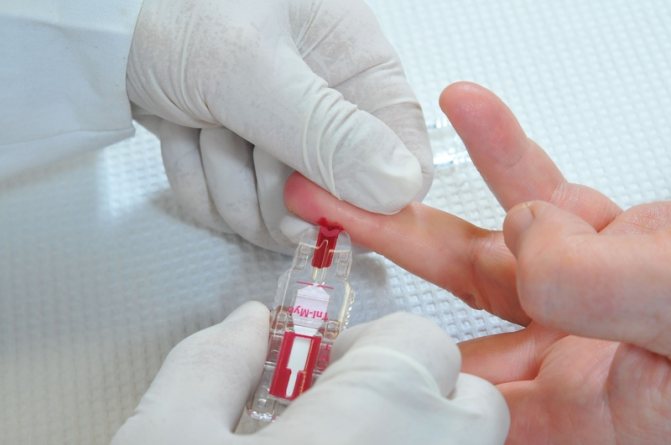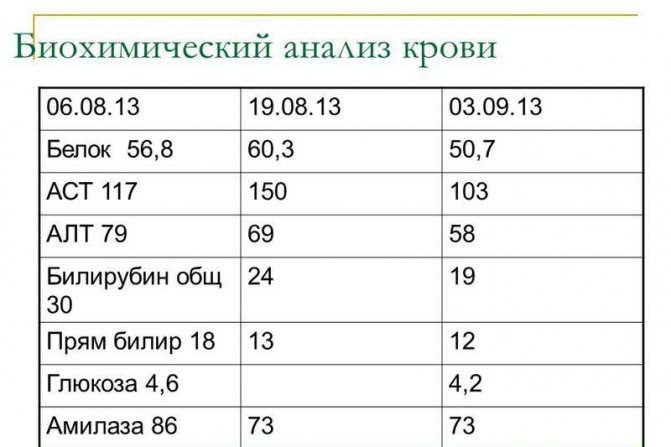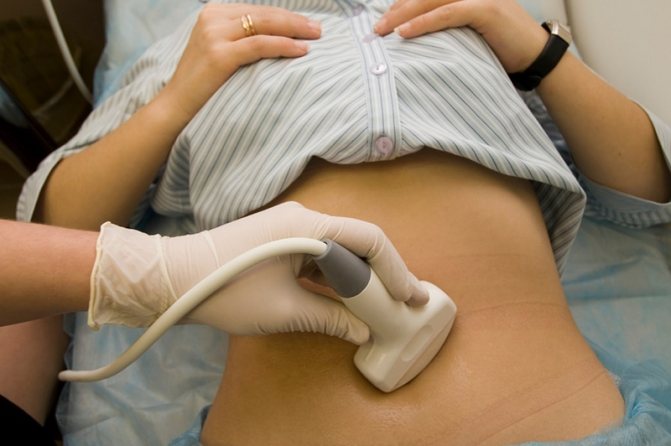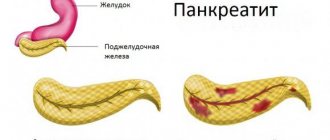Acute pancreatitis tests It is known that when acute pancreatitis is diagnosed, laboratory tests should be carried out first. They will be able to show a complete picture of the course of the disease, on the basis of which the attending physician prescribes further treatment.
This is due to the fact that the symptoms of chronic as well as acute pancreatitis are very similar to the signs of other diseases. Therefore, based on symptoms alone, a doctor cannot establish a final diagnosis, much less prescribe the correct treatment.
But the changes that occur in the patient’s blood and feces immediately make it possible to determine the presence or absence of an inflammatory process in the gland itself. But everything is not so simple with the analyzes themselves. They can be of several types, for example, there is a clinical blood test, and there is a so-called general blood test. In order to establish an accurate diagnosis, you need to do both.
Of course, before prescribing such a diagnosis, the doctor must conduct a preliminary examination of the patient. Find out about the presence of concomitant diseases and understand how long certain symptoms last for the patient. But in any case, if there is a suspicion of acute pancreatitis, tests must be taken.
All about clinical blood tests
It should be noted that a clinical blood test for acute pancreatitis is prescribed only as an additional examination. But it still needs to be done. Although its results only allow us to suspect the presence of an inflammatory process in the pancreas. When a person has pancreatitis, a clinical analysis of his blood will show a lack of hemoglobin, and also by the number of red blood cells it will be possible to determine the presence of blood loss in the patient’s body. By the way, if blood loss is confirmed, this indicates the presence of hemorrhagic complications. But if the level of leukocytes is elevated, the doctor will definitely suspect the presence of inflammation. With this disease, the erythrocyte sedimentation rate in the blood may also increase. You also need to evaluate the ratio between blood cells and the liquid part; if it is increased, then this indicates an incorrect water-electrolyte balance.

A clinical blood test for acute pancreatitis is prescribed as an additional examination
Of course, this type of research is important, but it still does not give the full picture.
Important! Be sure to conduct a biochemical blood test and ultrasound of the pancreas.
Only after this can the doctor prescribe the necessary treatment and, accordingly, establish a final diagnosis.
What does a biochemical blood test say?
As already mentioned, in addition to the above study, a biochemical blood test should also be performed. After all, only correctly prescribed tests can confirm or refute the diagnosis of acute pancreatitis.
As for this type of diagnosis, it has the most significant importance in the process of examining the patient. After all, it is with the help of this method that it will be possible to determine the general condition of the human body and find out at what level its functionality is. If pancreatitis is nevertheless confirmed, a biochemical blood test should show the following results:
- the level of amylase will definitely increase (this is the so-called pancreatic enzyme, its main function is to break down starch);
- elastase levels will also increase;
- in addition, an increased level of lipase, phospholipase and another enzyme, trypsin, will be recorded;
- in the presence of pancreatitis, the level of glucose in the blood is always increased, the reason for this is considered to be a malfunction of the pancreas, which must produce insulin, which regulates the level of glucose in the blood;
- if the pancreas is too enlarged, then it closes the pathways that remove bile from the body, and therefore bilirubin will also be higher than normal.
A decrease in protein levels may indicate protein starvation in the body.
Pancreatitis: everything you need to know
As you can see, the above blood tests can tell in detail whether the patient has acute pancreatitis or whether all fears are in vain.

Pancreatic enzyme levels
Important! Particular attention is always paid to the level of pancreatic enzymes, namely amylase.
By the level of amylase, you can immediately understand whether a person has this disease or not. Amylase levels are checked periodically during treatment. Accordingly, if the level of this enzyme approaches normal levels, then the patient’s condition improves, and the treatment benefits the patient. By analyzing the level of enzymes, it will be possible to determine the state of the gland over time. If, after prescribing treatment and carrying it out, the test results show deviations in amylase levels, and the patient experiences severe pain in the abdominal area, treatment is immediately stopped and additional diagnostics are carried out. Such symptoms indicate that the therapy is not benefiting the patient, and his condition is only getting worse.
Important! I would also like to note that many patients who suffer from pancreatitis also have problems with liver function.
This is indicated by the result of a blood test. For example, if lipases are detected in the blood, then an increase in this enzyme may indicate the presence of complications in the functioning of the liver and gall bladder. And accordingly, the patient has problems with removing bile from the body.
Taking anamnesis and external examination of the patient
Taking an anamnesis is also an equally important stage in the diagnosis of pancreatitis.

It is necessary to clarify when the patient first began to feel discomfort, whether he went to medical institutions, what diagnoses were made, what studies were carried out and the amount of treatment provided.
Survey:
- The patient is asked when exactly the pain occurs?
- What did you take for severe pain?
- Was there a decrease in appetite the day before?
- What color is the stool and how many times does the patient go to the toilet.
Also read: Signs and symptoms of pancreatitis in women
After collecting anamnesis, the doctor examines the patient. First of all, the doctor pays attention to the skin. If the disease occurs in a chronic form, then in this case the patient will experience jaundice.
With biliary-dependent pancreatitis, the sclera, skin, and mucous membrane are yellow.
Palpation of the abdomen: in the projection of the gallbladder, the patient experiences pain. At the time of palpation, the doctor may notice that the gallbladder is enlarged.

The area of palpation defines the area of greatest curvature of the wall of the stomach and transverse colon. This area is outlined in advance so as not to confuse it with the area where the pancreas is located.
Key points during palpation:
- There is no pulsation of the abdominal aorta.
- Positive frenicus is noted - a symptom.
- Subcutaneous fat is depleted.
All of the above measures help make a preliminary diagnosis. To make an accurate diagnosis, laboratory and instrumental diagnostics are used.
What diagnostic methods are used additionally?
Of course, blood tests for acute pancreatitis are very important. But not only they can show the true reason for the patient’s poor health. A stool test should also be performed. Its results will also help determine the true condition of the gland. Everyone knows that when the secretion of the gland is disrupted, the digestion process suffers first. Therefore, channel analysis will instantly show whether there are similar disorders in the human body or whether there is nothing special to worry about.
If this disease is present, the diagnostic results will be as follows:
- presence of fat;
- leftover food (undigested);
- stool color is light.
All this suggests that the patient has impaired digestion. By the way, in order to understand that something wrong is happening to the body, it is enough to visually evaluate the feces; you don’t even have to wait for the results of the analysis. For example, when feces are poorly washed off or have a shiny surface, this may already indicate that the body has problems with the digestion process. You should also start to worry if your stool becomes too loose and frequent. The smell of feces also says a lot; if it is very unpleasant and strong, then this is a sign that the pancreas is in poor condition, and the process of rotting food is taking place in the intestines.
But these are not all the studies that can be prescribed to make a final diagnosis. The patient must also have a probe inserted and pancreatic juice taken for a sample.
Stool analysis
Before collecting stool, you must wash yourself thoroughly using soap or shower gel, and then dry your skin thoroughly with a dry, clean towel. This will prevent water and bacteria from getting into the stool from the skin and significantly increase the reliability of diagnosis.
It is best to collect stool in a small plastic container with a tight-fitting lid. For analysis, 1 teaspoon is enough. When collecting stool, it is recommended to use a medical vessel or a duck. It is strictly prohibited to catch feces from the toilet, as in this case it will be contaminated with foreign impurities.
When analyzing stool in a patient with pancreatitis, a condition such as steatorrhea is often observed - an increased content of fatty components in the stool. Steatorrhea often provokes bowel dysfunction, which can manifest as diarrhea or constipation.
In addition, in a person with inflammation of the pancreas, particles of undigested food may be found in the stool. This is explained by the fact that the diseased organ cannot produce enough digestive enzymes, which disrupts the process of digestion and absorption of food.
Another indicator of pancreatitis is a low level of pancreatic elastase in the stool, a proteolytic enzyme necessary for the normal functioning of the digestive system. When the pancreas is inflamed, its secretion is significantly reduced, which can be detected during a stool analysis.
The most expensive method of examining stool is the pancreatic elastase test, which will cost the patient approximately 2,500 rubles. In turn, a coprogram that allows you to detect high levels of fat and undigested food debris in stool will cost about 450 rubles.
Everything you need to know about diagnosing pancreatitis
Of course, any doctor will definitely prescribe blood tests to diagnose acute pancreatitis, but there are a number of other methods. Let's say it could be:
- Ultrasound;
- stool analysis;
- probing;
- urine testing for the presence of trypsinogen and much more.

Modern medicine is developing more and more every year, more advanced new diagnostic methods are being found and developed, on the basis of which an accurate diagnosis can be established. Therefore, there is no need to immediately panic if it is assumed that the patient has pancreatitis. Initially, you need to conduct a full examination and find out at what level of development the disease is, what concomitant diseases are present, and only after that establish a clear treatment regimen. It is this approach that will make it possible to cure the patient in a short time and prevent the development of the disease.
As for the treatment regimen itself, everything depends on the course of the disease and the general health of the patient. But in any case, with pancreatitis you need to adhere to a very strict diet. Sometimes, in severe cases, fasting may be prescribed. The patient must also follow a certain daily routine; in many cases, certain physical activities are prescribed for a speedy recovery. Therefore, treatment should always be carried out in a comprehensive manner and under the strict supervision of a doctor. But, of course, first you need to conduct a correct and competent study and establish an accurate diagnosis.
Collection of patient complaints with pancreatitis
So, diagnosing pancreatitis includes collecting complaints. During the initial survey, the doctor can roughly determine the course of the disease: acute or chronic.

Nausea and vomiting often accompany acute pancreatitis and are reflexive in nature. Nausea can be constant and painful. Vomiting usually does not bring relief.
Clinical manifestations of pancreatitis:
- The patient experiences intense pain. As a rule, pain that indicates pancreatitis occurs 30 minutes after eating fried or fatty foods. It should be noted that the pain is girdling in nature, so it can spread to the entire abdominal area. With more severe severity, the pain radiates to the scapula or back.
- A patient with pancreatitis begins to complain of belching, flatulence, and loose stools. Such signs arise due to impaired digestion and atony of the duodenum. There is an unpleasant bitter taste in the vomit.
- Loss of body weight, severe muscle weakness appears. Vitamin deficiency is often observed with pancreatitis. Symptoms occur against the background of pancreatic enzyme deficiency.
Chief gastroenterologist of the Russian Federation: “PANCREATITIS does not go away?! A simple treatment method has already healed hundreds of patients at home! To cure the pancreas forever you need...” Read more »
In addition to these signs, with this disease the patient is thirsty and has “hungry” fainting. Such symptoms indicate diabetes mellitus and occur due to insufficient insulin production.










